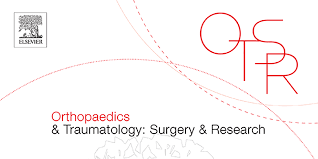Nouvelle Publication scientifique Genou : Ligament croisé au Tendon Quadricipital
Dans cet article publié dans la revue française de chirurgie orthopédique.
Notre technique de prélèvement du tendon quadricipital mini-invasif sans aucun dispositif particulier.
Les reconstructions des ligaments croisés utilisant le tendon quadricipital ont gagné en popularité ces dernières années.
Nous avons débuté notre experience de cette greffe en 2016, tout d'abord dans le cadre de reprise (échec itératif) de greffe du ligamentoplastie, puis rapidement en première intention. Les greffes prélevées au depend du tendon quadricipital offre des grandes possibilités d'adaptation à l'anatomie individuelle autant en terme de diamètre que de longueur.
Nous réservons ces greffes au patient avec une pratique sportive intensive car si leur resistance à la rupture est supérieure à celle des tendons ischio-jambiers, la rééducation des muscles de la cuisses est souvent plus longue qu'avec ces greffes.
Résumé en anglais.
The quadriceps tendon is gaining preference as an autograft over conventional grafts for the primary reconstruction of the anterior and posterior cruciate ligaments and of the medial patello-femoral ligament. In the past, the use of the quadriceps tendon was associated with considerable morbidity and less favourable outcomes compared to other grafts, specifically due to post-operative weakness of the quadriceps and other complications such as patellar fracture and rupture of the extensor apparatus. These problems are partially ascribable to the graft harvesting method used (large incision, bone block >2 cm, and full-thickness tendon harvesting). Recent technical advancements have made reproducible harvesting of quadriceps grafts possible, thereby largely preventing the complications. In this study we describe an original quadriceps tendon harvesting technique in which a minimally invasive approach allows the collection of a sufficiently long graft, while sparing the deep layer of the quadriceps tendon. This technique decreases intra-operative morbidity and improves the post-operative outcomes.

